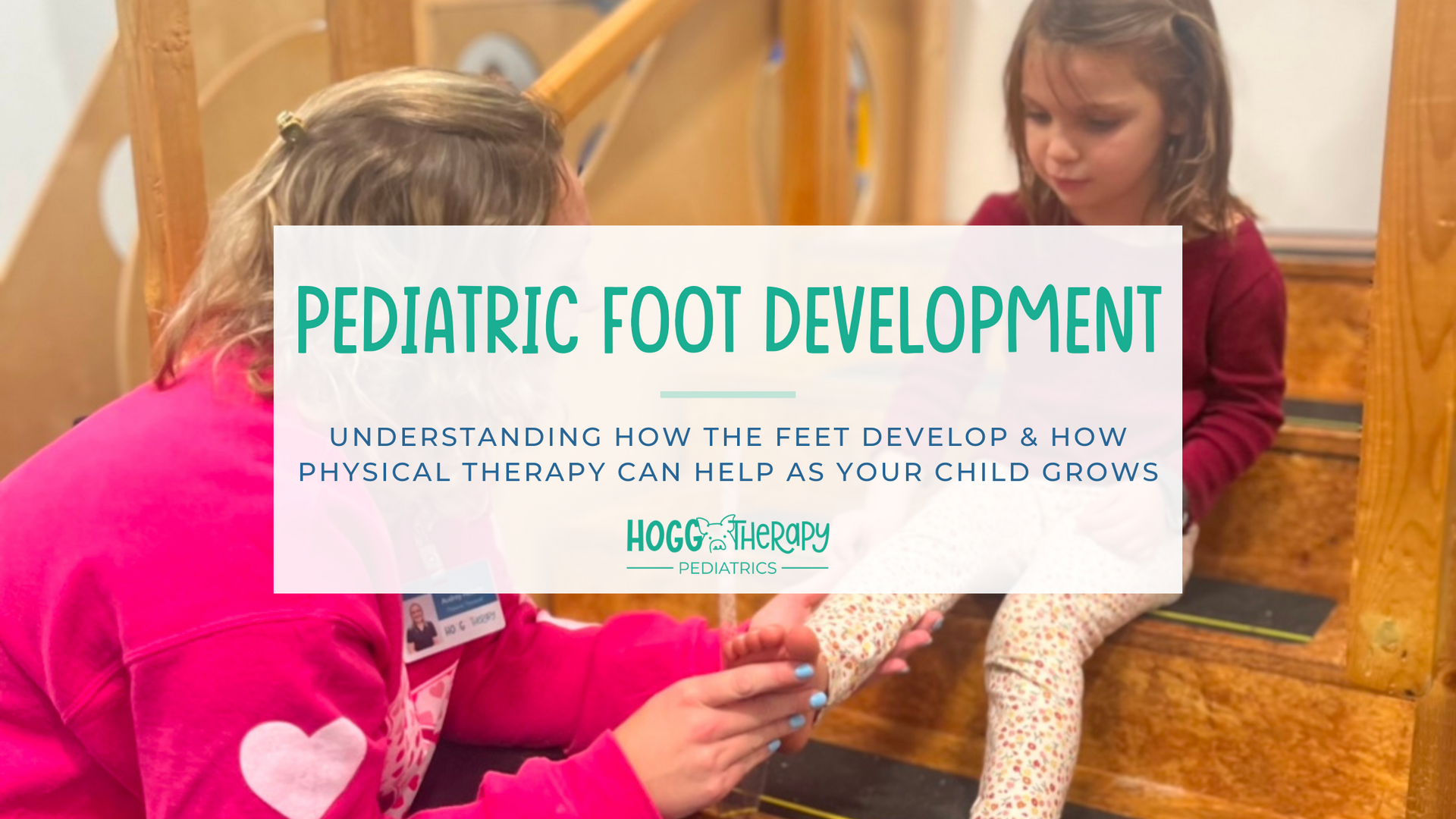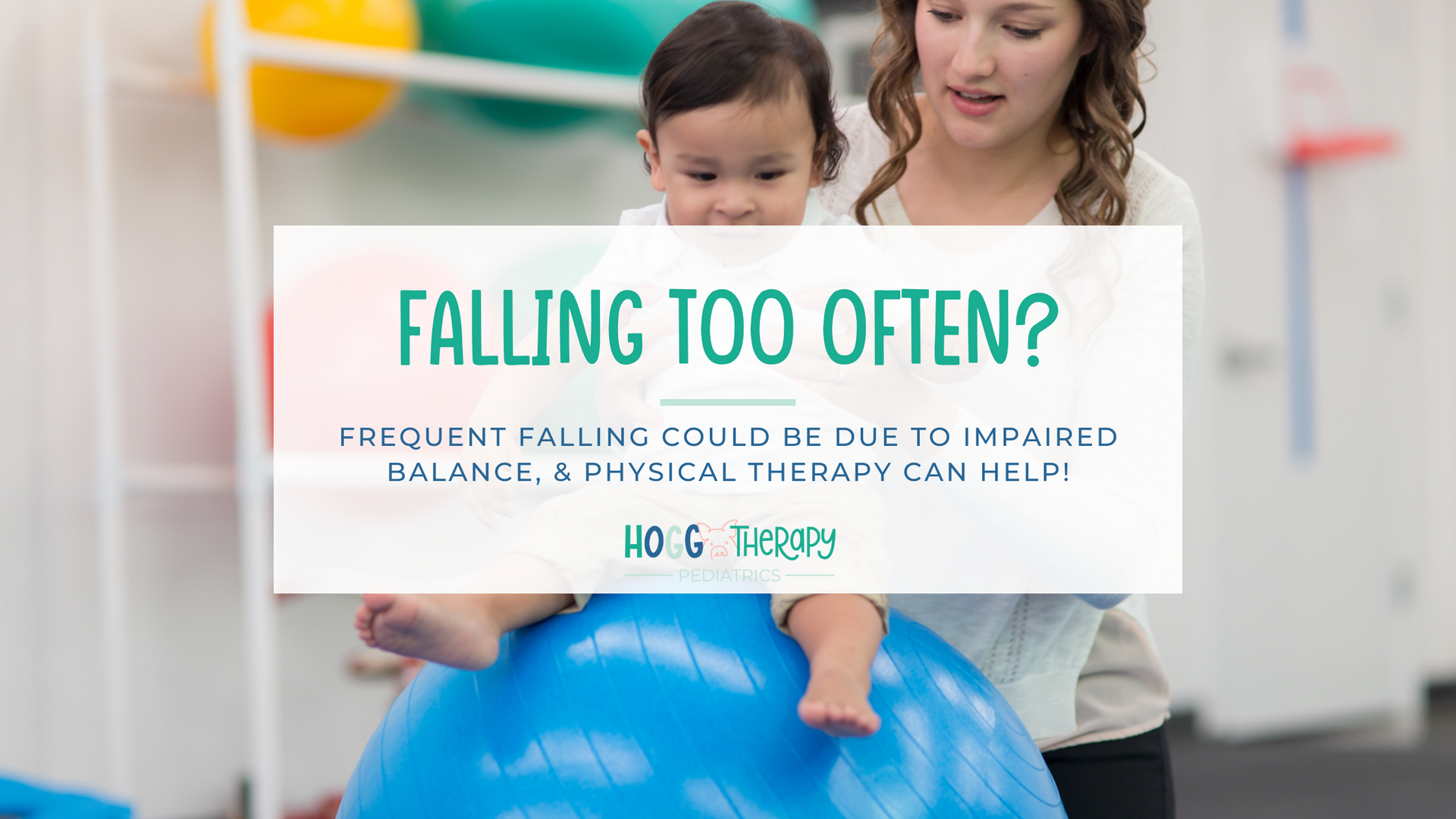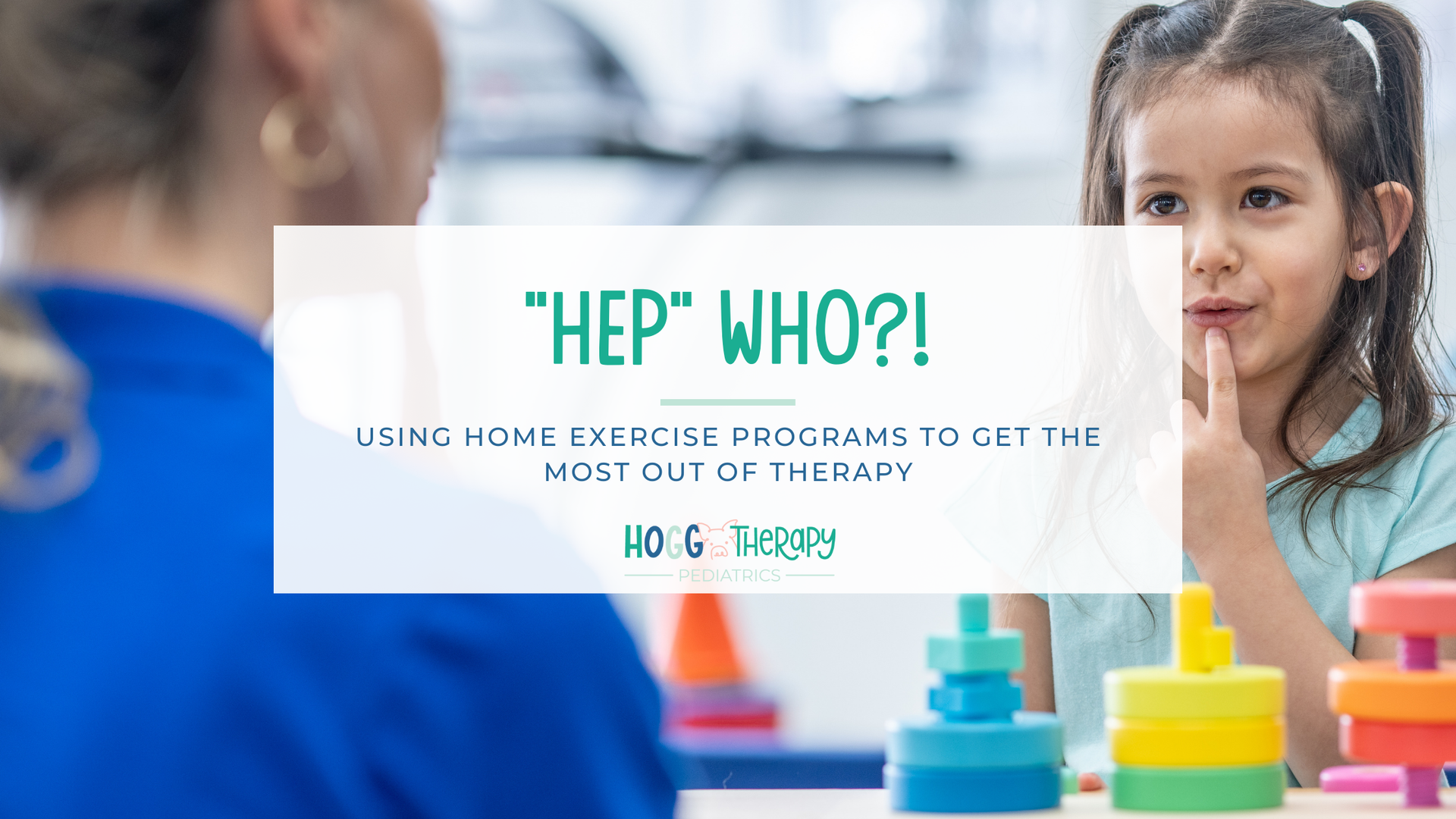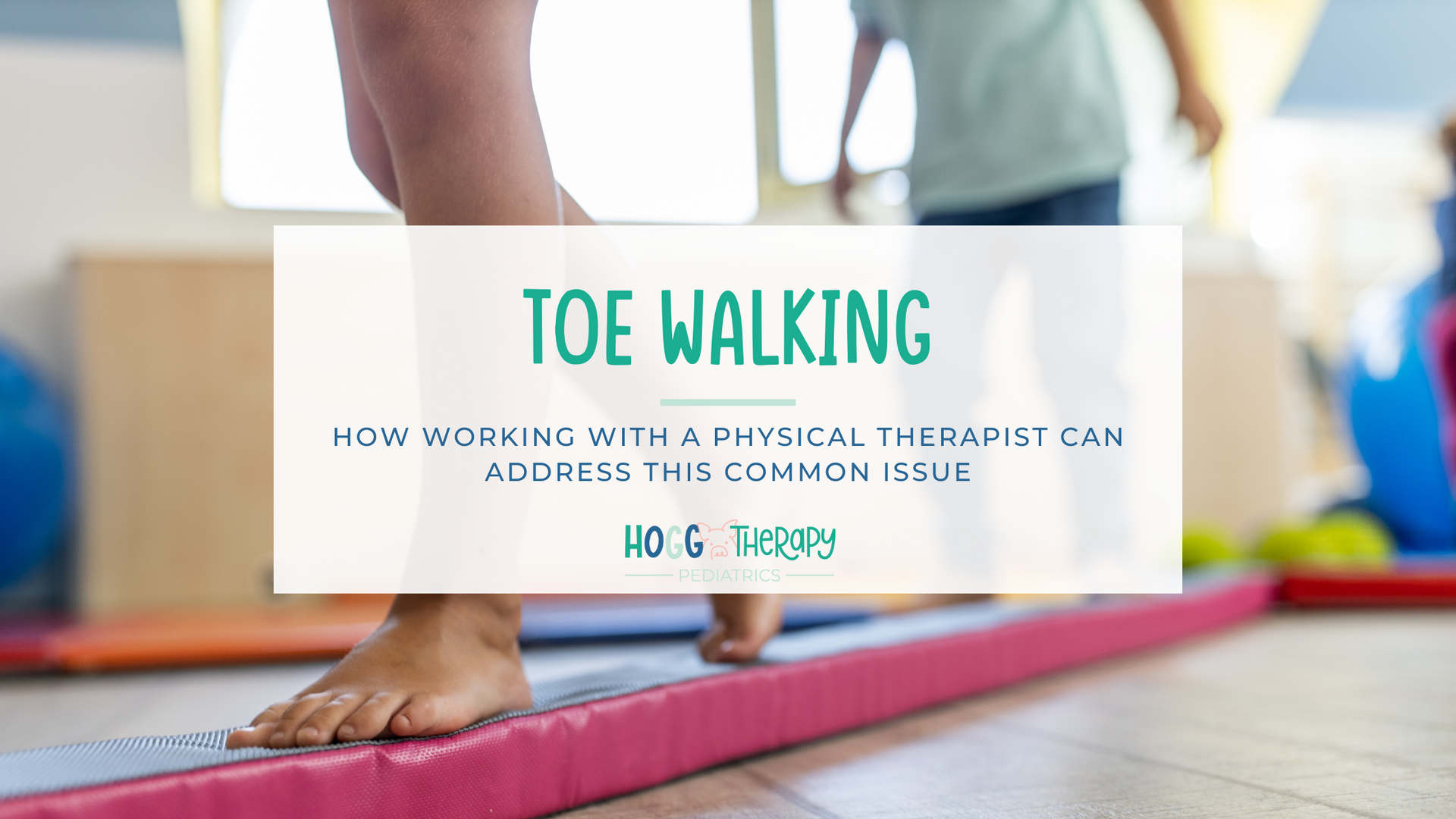Future Ballers: The Benefits of Playing with a Ball
Playing sports and games with a ball is very common growing up even if you don’t play on a team. Read this post to see what typical development looks like, and how can you help your child improve their skills at home.

Taylor Adkins, PT, DPT
Playing sports and games with balls is very common growing up even if you don’t play on a team. Most people have memories of kicking a ball with friends in elementary school or even playing monkey in the middle with their siblings. A lot of parents also have dreams for their children to be able to play sports on a team. There are a lot of benefits to playing sports beyond pure strength and endurance. Children learn coordination, how to work as a team, and how to work hard just to name a few benefits. Playing multiple sports is even better because children learn to work more than one group of muscles in more than one specific way. For example, the way you use your arm muscles in baseball to pitch is different than how you use your arm muscles in swimming.
Typical Development
Children actually learn how to catch, throw, and kick a ball at a very young age. Around a year old, children should be able to roll and catch a ball that’s been rolled to them. Around two years old, a child should be able to overhand and underhand toss a ball. They should also be able to kick a ball without falling down. The distance and smoothness of coordinating their throw or kick should only improve as they grow older.
Practicing at Home with Balls
If you think your child is having difficulty throwing, catching, or kicking, here are some ideas of how to practice at home:
- The best way for a child to learn how to catch and throw a ball is to practice with someone. Playing games like catch or even balloon toss are great ways to practice. If a child never plays with a ball at home then they are naturally not going to be as coordinated with it as someone who plays with a ball all day.
- Start by standing closer together and with a larger ball. Throwing and catching larger balls are easier than smaller balls. It is also easier to start at a shorter distance such as 5 feet compared to longer distances such as 12 feet.
- Use a target for throwing so your child has a clear goal.
- If your child has difficulty throwing a ball, it is often helpful to stand behind them and place your hand over theirs to go through the motion. This helps your child learn what the motion should feel like which makes it easier to copy later.
- If they have difficulty underhand throwing because they “flip” the ball up, make sure that they turn their hand so their palm faces up.
- If your child has a difficult time catching a ball, have them raise their hands before the ball is thrown. Saying things like “put your hands out, palm up” are helpful. If they have difficulty successfully timing the catch of the ball, try having them “hug” the ball. This often gives children enough clues to help them time it.
- If your child has a hard time kicking a ball, start by placing the ball in front of them instead of rolling it towards them. This allows your child to only focus on kicking instead of having to both coordinate the timing of the movement and kick. Sometimes, children need you to tap their leg or pick it up for them to mimic kicking so they can learn what the motion feels like.
- As your child gets older, watch to make sure they are stepping through on their throws with the opposite foot. This helps them to throw farther and more accurately. In the picture below, the person is throwing with their right arm and stepping forward with their left leg.
Whether your child demonstrates typical development or struggles when playing with balls, try these tips to improve their skills. Playing is the best way to learn!
For more tips and tricks, check out our other blog posts! You can also follow us on Pinterest.















































































































